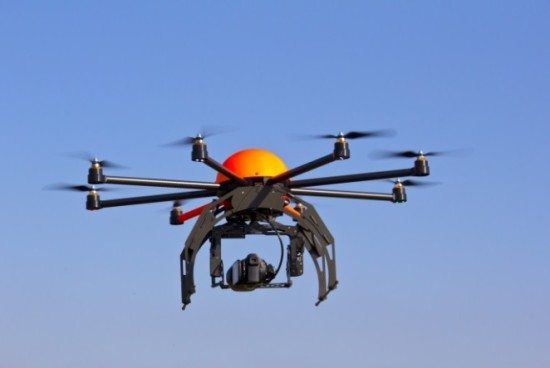The rapid development of drone technology and growing awareness of their potential threat has lead to a burgeoning drone detection market. Technology providers offer reliable detection mechanisms, but now organizations face a new challenge: How do you respond to an alert? Each drone countermeasure has its own pros and cons, and choosing the right one is no easy matter.
Just as there are multiple drone detection mechanisms, there are also multiple drone countermeasures. When creating a drone response plan, organizations have to take into account legalities associated with the airspace around them, as well as the feasibility and pros and cons of each countermeasure. No single response is ideal for every threat or even every organization within a single industry.
Counter-drone measures can be divided into three categories:
1. Regulation, Manufacturing Standards (Registration, License Plates, Pilot License, etc.)
This approach involves using a drone’s registration and license plates to report the pilot. A drone detection system should feature a camera that records every intruding drone. The recording is saved with all the other data, including date and time. The recording and data can be recalled at any time, such as for investigative purposes.
This countermeasure offers a number of advantages. It allows the organization to identify the owner and, because the incident is addressed through the authorities, there is more transparency and less liability for the reporting organization. It also means fewer pilot failures because the drone isn’t directly attacked.
Of course, this approach is only feasible if the drone is registered and has license plates. This is unlikely to be the case in high-risk scenarios involving terrorists or criminals.
No-Fly Zones/Geo-Fencing
A geo-fence is a virtual barrier that prevents drones from flying in defined areas. A software program defines the boundaries of a no-fly zone via global positioning system (GPS) or radio frequency identification (RFID). The primary advantage of geo-fencing is that it can reduce the risk of unintended threats by preventing drones from entering the no-fly zone. However, not all drones use this technology, it can be circumvented and there are several other approaches that make it hard to use reliably today.
2. Passive measures
Passive measures involve reducing the threat posed by the presence of a drone without actually disrupting the drone. If the drone is detected on time you can: send security personal to intercept the drone, lead people to safety, block the drone’s view, lock cell doors and gates in the case of a correctional facility, and search the site for dropped objects.
This approach offers several advantages. Depending on the application, it can be highly effective. It doesn’t require approval from authorities and can be combined with the countermeasures previously mentioned. It reduces the risk of someone getting hurt as a result of a crash. However, therein lies this countermeasure’s number one disadvantage: The drone is not stopped. A dangerous payload may still be delivered and, in the meantime, productivity takes a hit as you attempt to mitigate the risk to your people and other assets.
3. Active measures
Active measures physically stop the detected drone. This is their number one advantage. In most cases when drones are stopped they present a crash risk, which can cause physical harm and even fatalities, especially in heavily populated areas. Another drawback is that in most countries these can only be used by law-enforcement in the case of an imminent threat. Active Countermeasures include:
Jammer, Spoofer
Jamming or spoofing a drone’s radio connection or GPS is currently the most practicable and effective active countermeasure which will cause the drone to either return to its start position, sheer away, land or crash. Unfortunately, there’s no way to tell until you do it. This drone countermeasure can also affect other radio and GPS connections in the vicinity and is difficult to execute with drones in auto pilot mode. It’s also subject to approval by your local authorities. However, jamming or spoofing does offer an additional advantage beyond taking down the drone: It leaves open the possibility of eventually tracking down the pilot.
Firearms, electromagnetic pulse (EMP), laser
You can also choose to take down intruding drones using firearms, EMP or laser. In this case, the drone is destroyed and crashes. Firearms are only effective at low range, so they have minimal use cases, and are subject to approval by your local authorities – as well as EMPs and lasers. These are military technologies and therefore not economically viable.
Counter-Drone
Taking down an intruding drone with a counter-drone reduces the risk of a crash. However, it requires having a competent pilot at the ready, 24/7 to respond to intruders. In addition, the counter-drone must be extremely powerful. Both of these factors make this countermeasure cost prohibitive for most organizations.
Net canon
The final active countermeasure offers the benefit of stopping intruding drones without minimal crash risk. It involves shooting a net over the drone from the ground with a net cannon. Unfortunately, this approach also offers the greatest disadvantages in that it is only effective at low range and has a low success rate.
As you can see, choosing the most effective drone countermeasure is no easy task. However, just as the most effective drone detection systems combine detection methods to ensure accuracy under varying conditions and to reduce false positives, they should also offer you flexibility in deploying a variety of drone countermeasures. Organizations should also look for a provider who will serve as a consultative partner in identifying the appropriate countermeasure for your use cases. [su_box title=”About Jörg Lamprecht01″ style=”noise” box_color=”#336588″][short_info id=”64695″ desc=”true” all=”false”][/su_box]
The opinions expressed in this post belongs to the individual contributors and do not necessarily reflect the views of Information Security Buzz.



